Engine Room
Dear Readers,
During our transit down to the Galapagos Triple Junction the 1st engineer gave us a tour of the heart of the ship: the engine room. On the R/V Marcus G. Langseth, the “engine” room is composed of four main rooms across two levels – engine control, engine, compressor, and propulsion. Beyond the engines and propulsion, the engineering department is responsible for maintaining almost everything on board the vessel including plumping, HVAC, and water distillation. They are equipped to fix anything on board. This vessel was originally designed to stay at sea for two years continuously with refueling and crew changes occurring while underway.
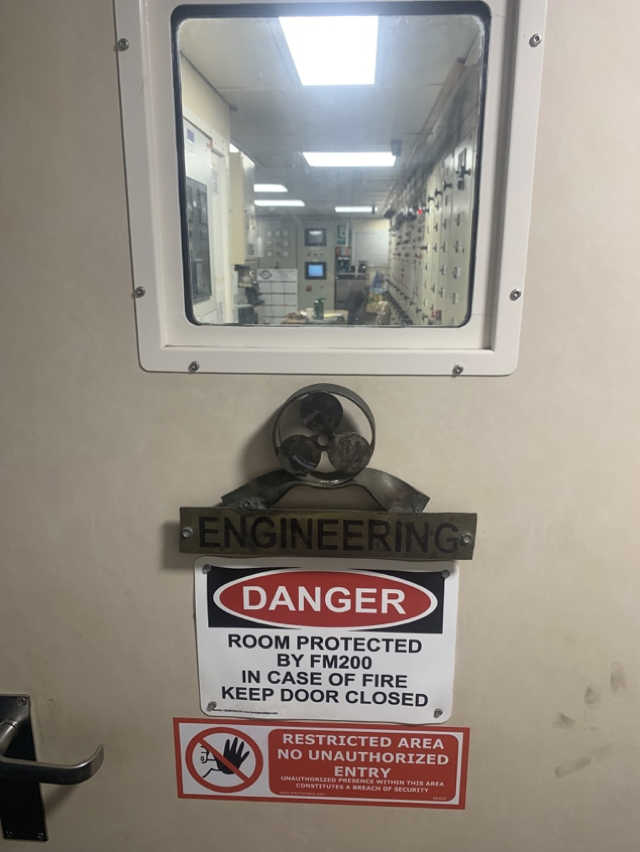
Before entering the engine room, everyone must put in ear plugs. It is the loudest and hottest part of the ship. The main engines on the Langseth are impressive. There are two 3550 hp straight six diesel engines about the size of my car. These engines are turbocharged, meaning that exhaust gases spin a compressor to feed the engine denser air for more power from combustion. The engines were made by Bergen ~35 years ago and are original to the ship. To keep the engines in top shape, the engineering department is vigilant and does preventive maintenance at decreased intervals.
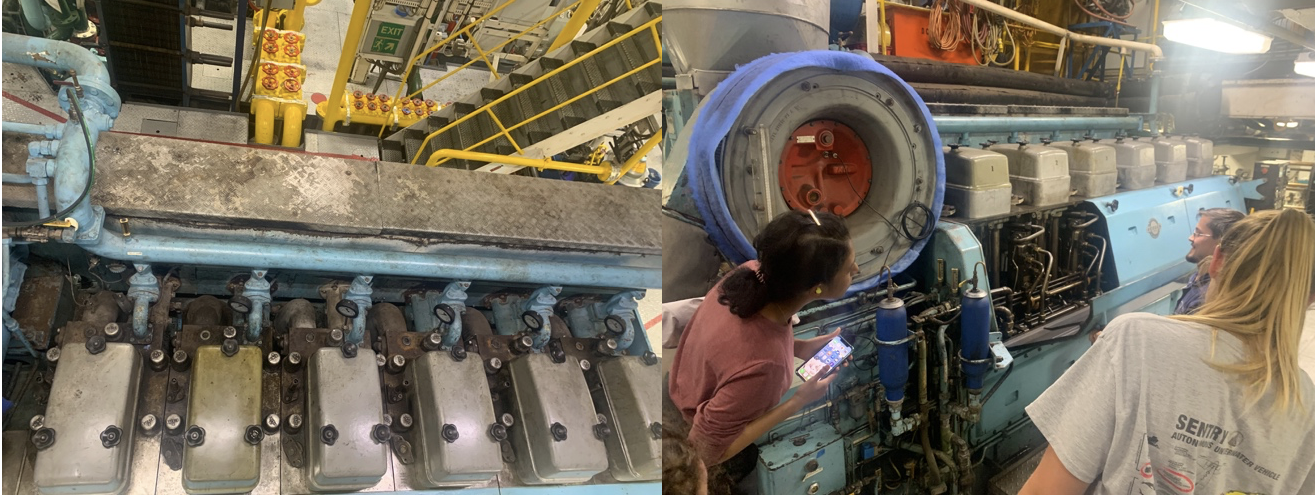
Aft of the engine room is the propulsion room, where engine power is used to spin the ships two propellers. In general engine speed is kept constant at 750 rpm and the angle of the propellers is changed when vessel speed needs to be altered. The propeller shafts are each connected to a shaft generator that powers the whole ship. The output voltage is 440 V but is stepped down to 120 V for regular use. For port, a smaller independent generator is used when shore power is not available.
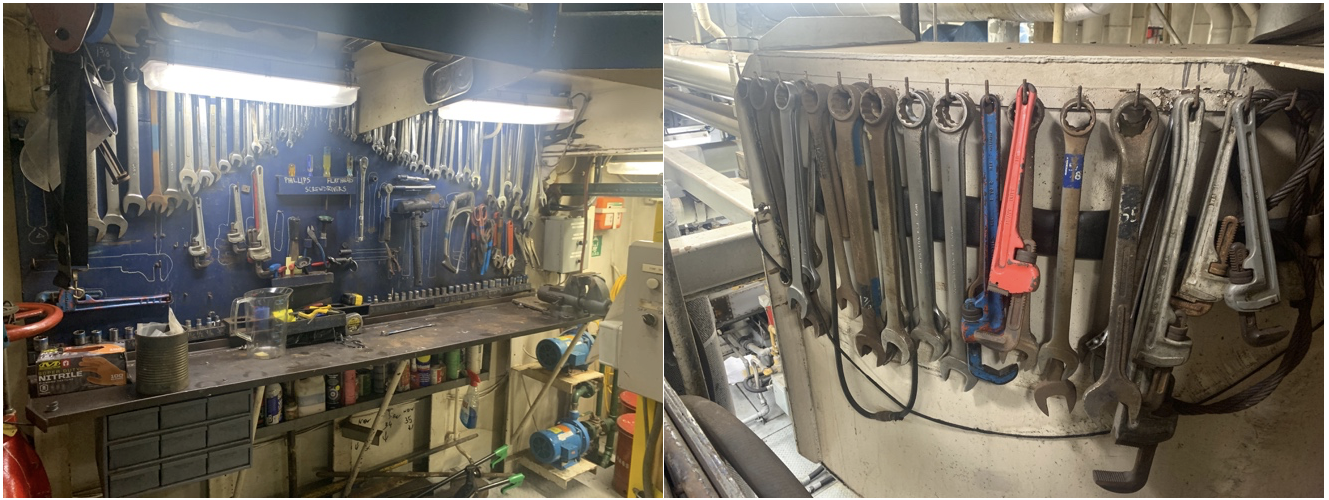
The compressor room is part of what makes the Langseth special. This is where air is compressed to 2000 psi (~135 times ambient pressure) for the air guns used during active source seismic surveys. To reach high pressure in the quantities needed, the compressors are run with a 16-cylinder diesel engine. Reaching 2000 psi with enough air requires multiple stages of compression and cooling of the air. We are not doing any active source seismic on this cruise, but I have been aboard when they are used in the past and these compressors work hard.
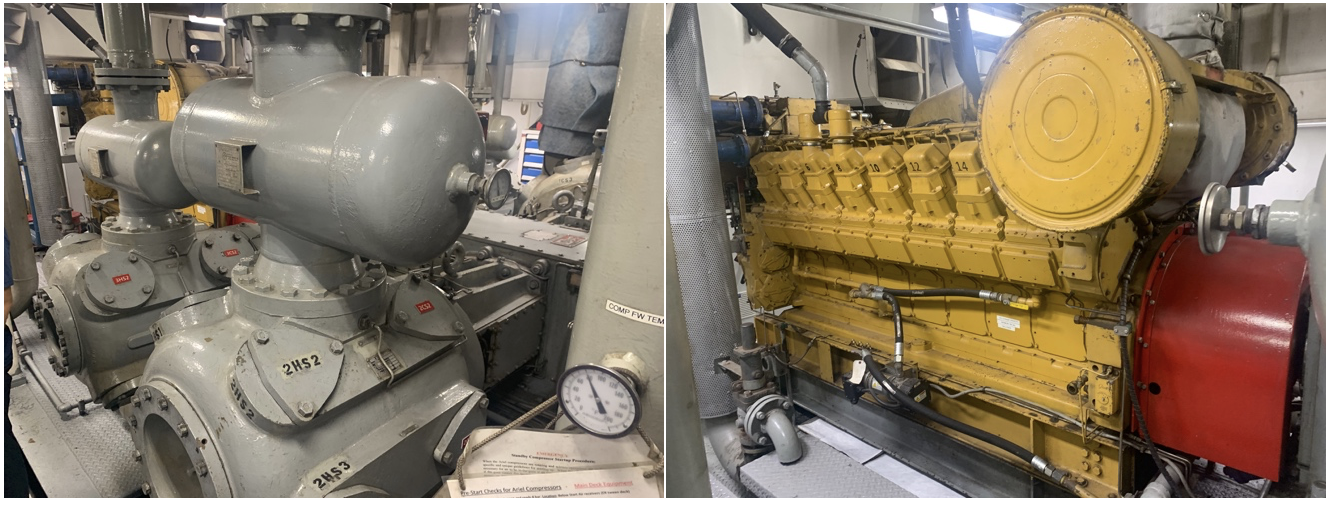
Other features of the engine room include the 800 hp bow thruster to help move the vessel when tight maneuvering is required. All A/C and refrigerator compressors are in the engine room as well. They also have a machine shop to help them fix anything they need to. Another important feature of the engine room is making fresh water for the ship. There are two systems to make fresh water on the ship. The freshwater generator heats sea water in a vacuum and then condenses it without the salt. There is also a reverse osmosis system that can make fresh water as well. During our transit, they have not had to make as much water as they usually do. The 1st engineer told us the engineering department is wondering why we don’t use so much fresh water…
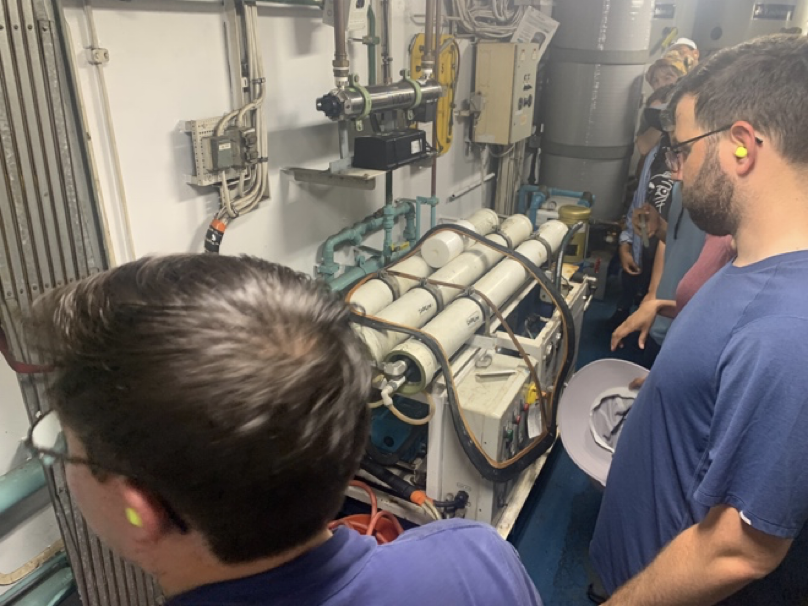
Until next time,
Will